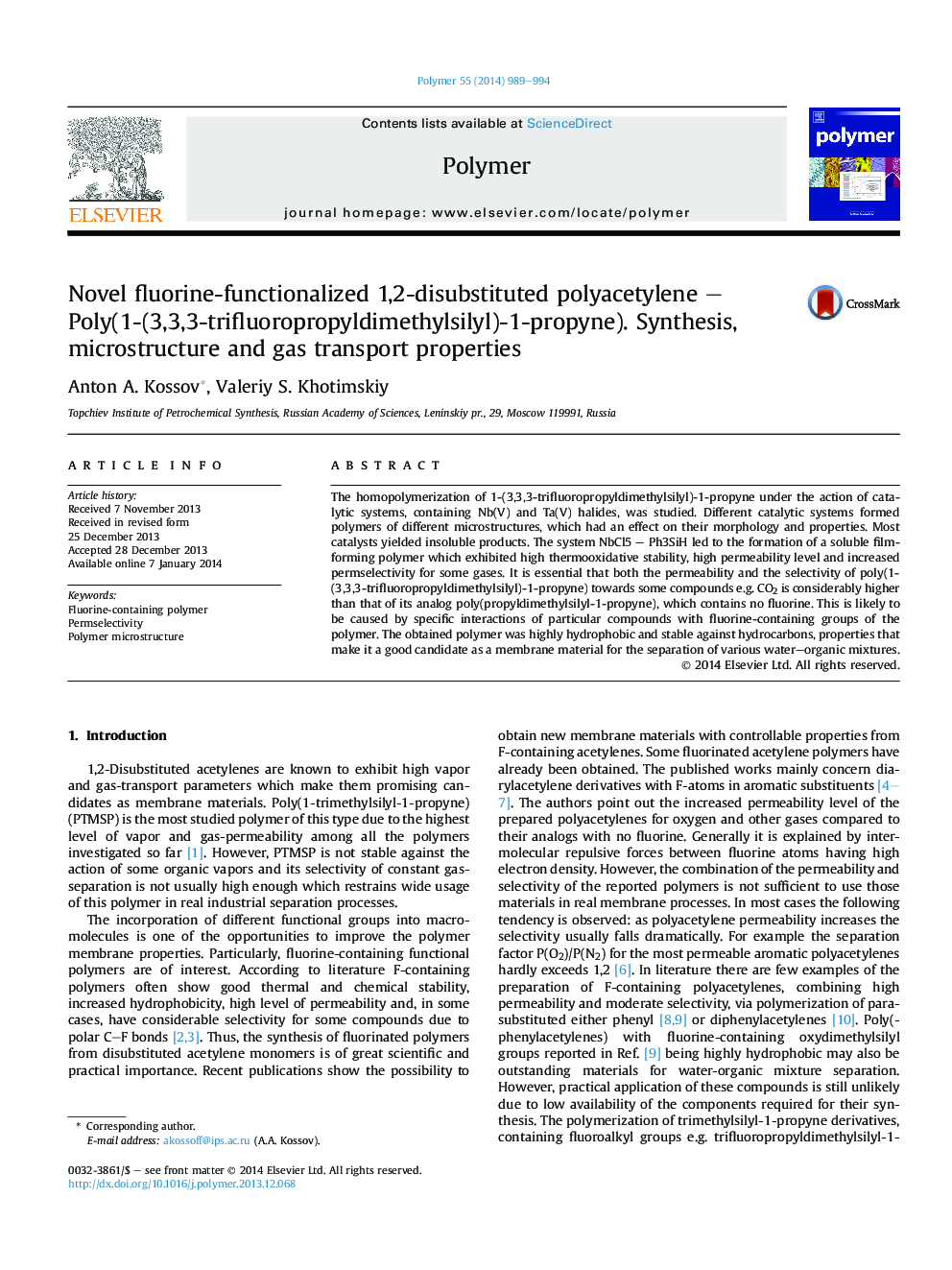| Article ID | Journal | Published Year | Pages | File Type |
|---|---|---|---|---|
| 5181817 | Polymer | 2014 | 6 Pages |
The homopolymerization of 1-(3,3,3-trifluoropropyldimethylsilyl)-1-propyne under the action of catalytic systems, containing Nb(V) and Ta(V) halides, was studied. Different catalytic systems formed polymers of different microstructures, which had an effect on their morphology and properties. Most catalysts yielded insoluble products. The system NbCl5 - Ph3SiH led to the formation of a soluble film-forming polymer which exhibited high thermooxidative stability, high permeability level and increased permselectivity for some gases. It is essential that both the permeability and the selectivity of poly(1-(3,3,3-trifluoropropyldimethylsilyl)-1-propyne) towards some compounds e.g. CO2 is considerably higher than that of its analog poly(propyldimethylsilyl-1-propyne), which contains no fluorine. This is likely to be caused by specific interactions of particular compounds with fluorine-containing groups of the polymer. The obtained polymer was highly hydrophobic and stable against hydrocarbons, properties that make it a good candidate as a membrane material for the separation of various water-organic mixtures.
Graphical abstractDownload full-size image
